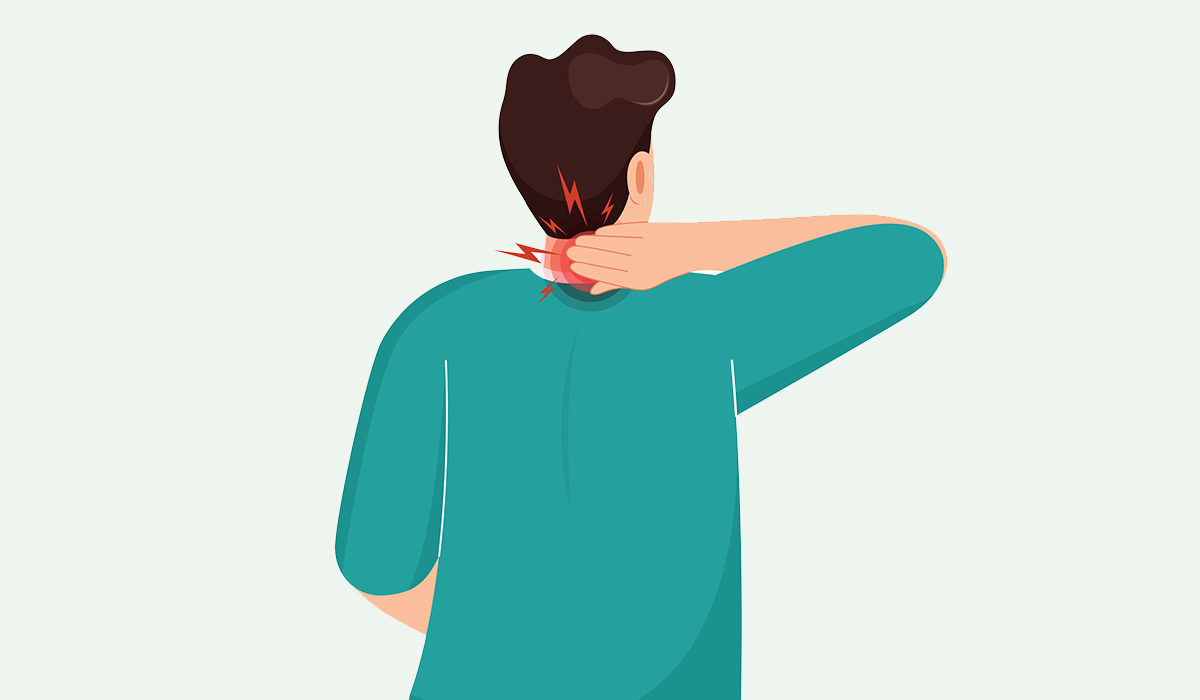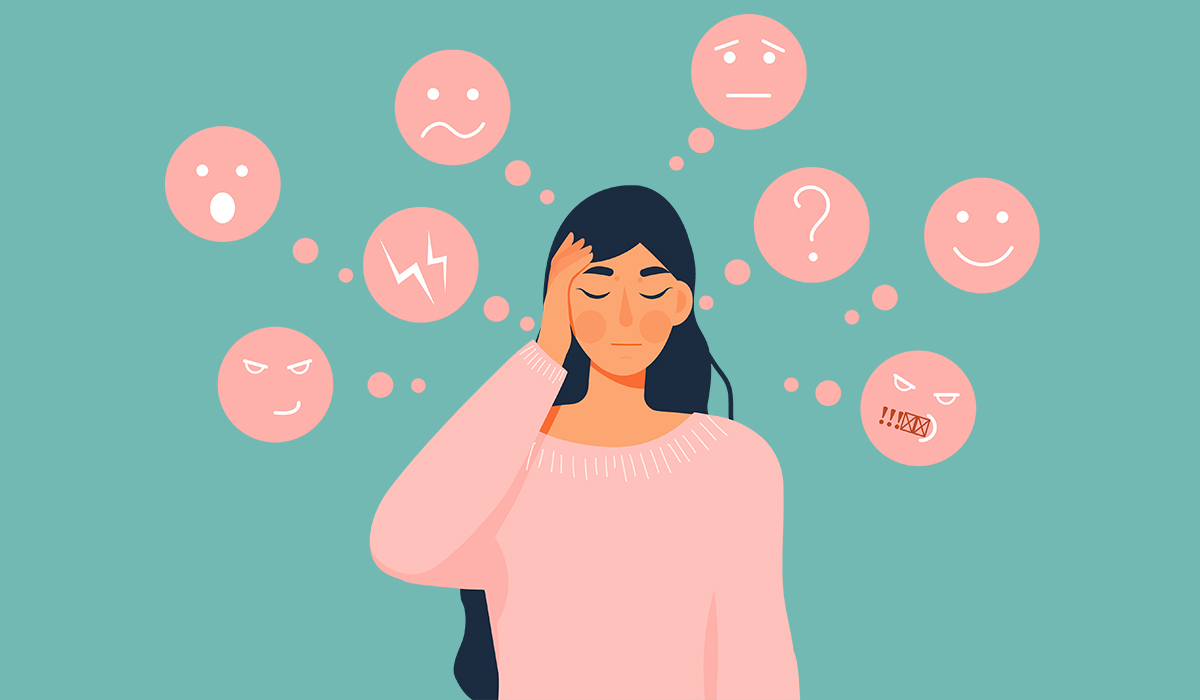During colonoscopy, a sample of the mucous membrane of the large intestine (so-called biopsy) can be taken, which is sent for histopathological examination. Minor procedures are also possible. Hence, there are two types of colonoscopy: diagnostic and therapeutic.
Does A Colonoscopy Hurt?
Colonoscopy allows viewing of the lower digestive tract, removal of vascular lesions and polyps, and collection of samples. The examination can be performed under anesthesia or without additional medications administered to the patient.
Fear of pain is one of the most common factors stopping patients from undergoing the examination—in reality, the sensations accompanying colonoscopy depend on the patient’s sensitivity, the operator’s experience, the position of the intestines during the examination, the anatomical arrangement of the intestine, or adhesions after previous surgeries (e.g., gynecological).
An examination without anesthesia performed by an experienced doctor does not usually cause unpleasant symptoms. However, some patients may experience discomfort or pain associated with the pulling of the mesentery (a highly innervated membrane in the intestine) during the camera movements.
During colonoscopy without anesthesia, the patient primarily feels intestinal distention and bloating caused by the insufflated air or carbon dioxide. In turn, withdrawing the endoscope from the intestine is not painful or bothersome for the patient because excess air is removed. The patient may feel mild discomfort for a few hours after the examination.
Indications
In addition to preventive tests, indications for colonoscopy include:
- Clinical data suggesting inflammatory bowel disease, ulcerative colitis, Crohn’s disease, and in older people, especially women, suspicion of microscopic colitis
- Sudden change in bowel habits in the last few months, constipation or prolonged diarrhea of unclear origin, impurities in the stool (especially the presence of blood)
- Broadly understood deficiency anemia
- Clinical features of gastrointestinal bleeding
- Malabsorption syndromes
- Sudden and unjustified weight loss
- Suspicion of a foreign body
- Differential diagnosis of abdominal diseases, including irritable bowel syndrome
Therapeutic indications for colonoscopy, performing minor procedures using endoscopic instruments, include:
- Polypectomy
- Stopping bleeding from abnormal structures (tumors, ulcers, vascular malformations)
- Decompression of exacerbation of ulcerative colitis (in the form of megacolon toxicum)
- Removal of foreign bodies
- Widening of narrowings in the lower digestive tract (such narrowings may occur, for example, after surgery on the large intestine)
Contraindication
Absolute contraindications to colonoscopy include acute abdominal conditions such as peritonitis, intestinal perforation, and acute diverticulitis.
In addition, relative contraindications (considered individually by the doctor) also include:
- Pregnancy (2nd and 3rd trimester)
- Symptomatic abdominal aortic aneurysm
- Severe coagulation disorders
- Exacerbation of chronic conditions such as respiratory or heart failure
Preparation For The Test
Colonoscopy requires special preparation from the patient, which affects the quality of the test and reduces the risk of complications and missing abnormal changes in the intestine. For the test to be reliable, the large intestine must be cleansed of food content.
Seven Days Before The Test
After consulting a doctor, the patient should stop taking iron preparations. People taking anticoagulants or antiplatelet drugs should also contact their doctor because, in some situations, it is necessary to stop taking these medications even a few days before the colonoscopy.
Three Days Before The Examination
The patient should follow a low-fiber diet for three days. Raw fruits and vegetables (especially those containing seeds, such as kiwi, cucumbers, raspberries, grapes, tomatoes, strawberries, and currants), processed products made from them, and bread with grains should be avoided. In addition, it is worth giving up products with an intense red color, such as beetroot, because they can make it difficult to assess the intestinal mucosa.

The Day Before The Examination
You can eat an easily digestible low-fiber breakfast, e.g., pudding, jelly, and for lunch a cream soup or strained broth. After 3:00 p.m., you cannot eat any meals; you can only drink clear liquids, e.g., still water, compote without fruit. A liquid diet is significant for patients with constipation. The day before the examination, you should start taking oral laxatives as a drinking solution in the afternoon. Take them in a dose and with a frequency consistent with the recommendations described in the product leaflet.
On The Day Of The Examination
You cannot eat anything. Take laxatives, according to the leaflet. You cannot drink 2 hours before the colonoscopy. If the examination is under anesthesia, you should stop drinking 4 hours before.
If there is time, specialists recommend performing a vaccination cycle against hepatitis B before the planned colonoscopy.
A colonoscopy is an endoscopic examination that assesses the condition of the mucous membrane of the large intestine. It requires special preparation from the patient, which involves proper cleansing of the intestine from retained gases and contents.
Preparing for a colonoscopy is a fairly complex process that the patient should undertake a few days before the examination. It involves diet, giving up certain medications, and taking bowel cleansing agents. Check out exactly how to prepare for a colonoscopy.
The Basis of The Examination
A colonoscopy is a procedure that evaluates the mucous membrane lining, primarily of the large intestine and also the final part of the small intestine. During this examination, a flexible tube equipped with a camera is inserted through the anus to record images, and additional tools can be used if necessary. Various procedures can be performed during colonoscopy, such as polyp removal, bleeding cessation, and sample collection for histopathological analysis.
Proper preparation for colonoscopy is crucial for optimum visibility of the structures being examined. Patients should seek detailed information about the preparation from their referring healthcare professional or the facility’s reception desk where the colonoscopy will occur. Inadequate preparation could compromise the reliability of results and impede the examination process.
Discontinuation Of Medications
The patient begins preparation for colonoscopy seven days before the examination. At this time, after consulting a doctor, you should stop taking iron preparations and, if necessary, anticoagulants (change to low-molecular-weight heparin). Other regularly used medications should be taken as recommended.
Diet
Five days before your colonoscopy, switch to a low-residue diet. During this time, it’s significant to cut down on raw fruits and vegetables, especially those with little seeds and processed products. It means avoiding raspberries, currants, figs, cucumbers, grapes, strawberries, tomatoes, and pickles. Skip carbonated drinks, grains, and poppy seeds. However, you can still enjoy meat, fish, pasta, white bread, rice, jelly, coffee, tea, clear juices, and broth. Stick to cooking, grilling, and stewing your foods during this time.
Cleansing The Intestine
Specialists can use the following preparations to cleanse the intestine before a colonoscopy:
- Fortrans
- CitraFleet
- Moviprep
Various preparations may be used depending on the scheduled examination time. Adding lemon juice or flavored juices (except red ones) can enhance the flavor of the preparations. These preparations often increase the body’s bowel movements, resulting in a liquid consistency.
Fortrans
Fortrans is a laxative medicine for colonoscopy. It contains four sachets. One sachet contains 64 g of macrogol 4000, and the rest are electrolytes. Fortrans and other macrogols cause diarrhea, which is desirable in this case. Diarrhea is most often associated with dehydration and electrolyte disorders. In this case, this should not happen because the resulting solution is isotonic, i.e., there is no exchange of electrolytes between the plasma and the intestines.
Fortrans are prepared so that one sachet is dissolved in 1 liter of water. The dosage is one sachet per 15 to 20 kg of body weight, so an adult needs to drink 3 to 4 sachets before the examination.
There are different regimens for taking Fortrans, but it is recommended that you drink the last portion of fluid at least 4 hours before the scheduled procedure. If the examination is scheduled for the morning, it is recommended that you drink Fortrans in the afternoon of the previous day.
Suppose the examination is planned for the afternoon. In that case, it is recommended to drink half of the portion, i.e., 2 liters, in the afternoon of the previous day and another 2 liters in the morning on the day of the examination. Fortrans are best drunk in 250 ml of the prepared solution (a glass) approximately every 15 minutes.
Moviprep
Moviprep is a colonoscopy preparation based on macrogols. The preparation cycle consists of preparing 2 liters of solution. One liter is made by mixing sachet A with sachet B in water. Moviprep can be used in two schemes:
- Single-dose scheme, in which 2 liters of solution are taken in the evening before the examination or early in the morning on the day of the examination (keeping a minimum interval before the examination)
- The two-dose scheme, in which 1 liter is taken in the evening before the examination and another liter early in the morning on the day of the examination
CitraFleet
CitraFleet is a pre-colonoscopy laxative containing a combination of sodium picosulfate and magnesium citrate. Sodium picosulfate inhibits the absorption of water and electrolytes in the intestine and increases their excretion, producing a strong laxative effect. Two sachets of the drug are required for the full bowel cleansing regimen.
As before, it can be divided into two regimens. The difference is that CitraFleet is a low-volume preparation. The sachet is dissolved in 150 ml of water, and after a few minutes of mixing – it is drunk. However, after drinking one sachet, another 2 liters of clean water should be taken (approximately 400 ml per hour). The interval between taking the sachets is 5 hours.
How Is A Colonoscopy Performed?
A diagnostic colonoscopy takes about 15-20 minutes and usually does not require general anesthesia. If it is necessary to extend the scope of the examination, it will take 30-40 minutes. The colonoscopy is performed in a side-lying position, with legs bent at the knees. The position may be changed to better visualize the intestine. During the examination, gas is introduced into the intestinal lumen under pressure. It dilates the intestine, making inserting the colonoscope and observing the mucosa easier.
Colonoscopy may cause the patient some discomfort and be associated with pain caused by reflex constriction of the intestine. If they are severe, the specialist may examine them under short-term anesthesia. For the colonoscopy, you should bring your ID card, recent laboratory and imaging test results (ultrasound, X-ray, previous endoscopic examinations), and medical records (past hospitalizations, procedures). After the examination, the patient remains at the facility for about 2 hours. In the case of anesthesia, the patient cannot drive for 12 hours. Ensure that someone accompanies the patient from the facility to home.
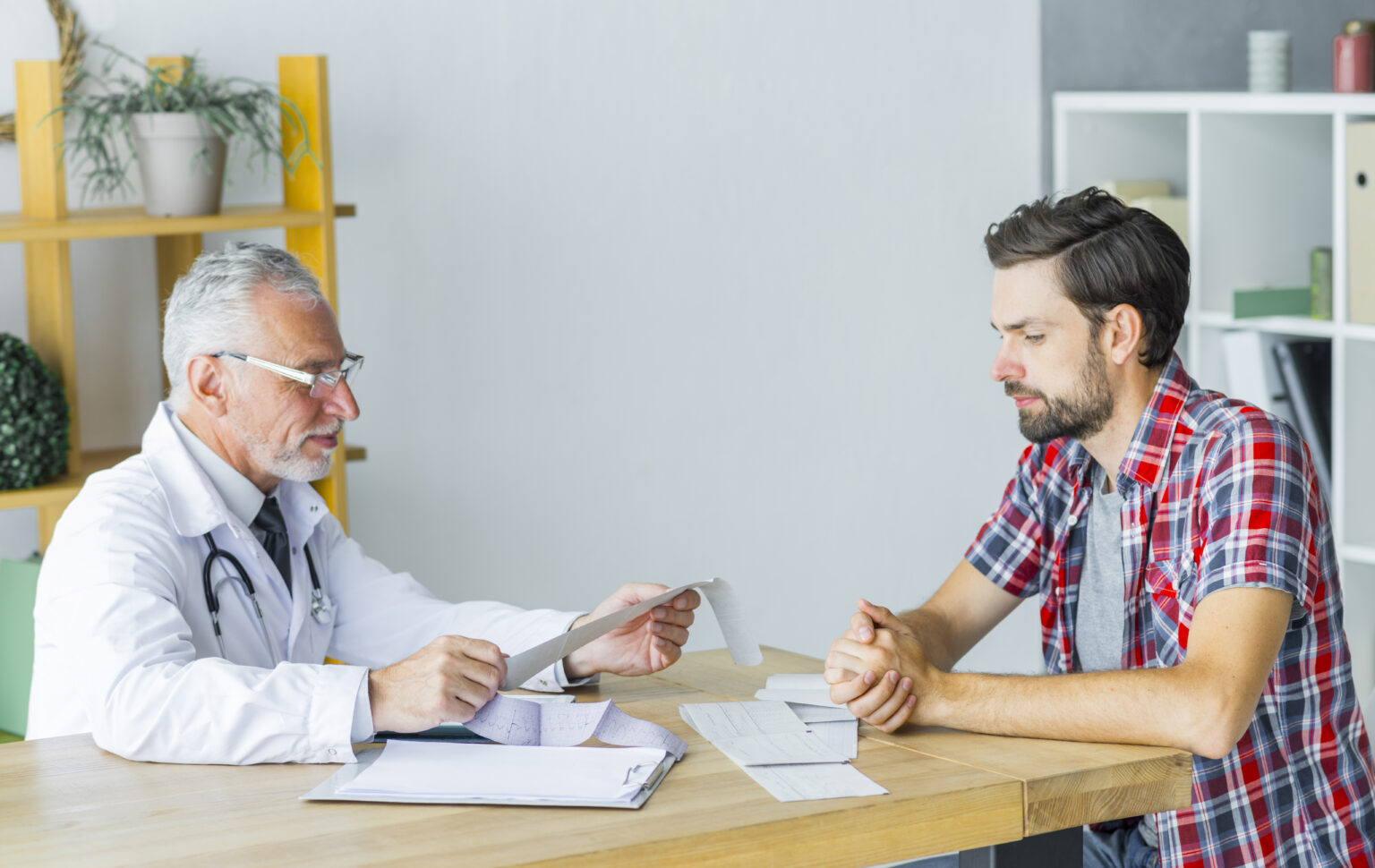
How You Feel After The Colonoscopy?
After the test, you may feel some bloating and cramping caused by the air introduced into your bowel during the test. This feeling will go away after you pass the wind. After the test, you can eat and return to normal activities on the same day. Do not drive or use other machinery on the day of the test as sedatives can impair your reflexes.
If you have been sedated, you will be under observation for 1-2 hours. You will need someone to drive you home after the procedure. If you can’t recall the instructions provided by your doctor after the test, reach out to them the following day.
Complications After Colonoscopy
Pain of varying intensity may persist after the examination, disappearing after a few or a dozen hours.
More severe complications requiring surgical intervention are rare:
- Heavy bleeding
- Puncture of the intestinal wall
Alarm signals include:
- Abdominal pain
- Fever
- Chills
- Bleeding
- Black, tarry stools
If such symptoms occur, you should consult a doctor immediately.
Sources
- Colonoscopy. NIH.
https://www.ncbi.nlm.nih.gov/books/NBK559274/ - Colonoscopy – A Guide to the Test. NHS.
https://www.nlg.nhs.uk/resources/colonoscopy-a-guide-to-the-test/ - Why it’s done. NHS.
https://www.nhs.uk/conditions/colonoscopy/why-its-done/ - Bowel Preparation. NIH.
https://www.ncbi.nlm.nih.gov/books/NBK535368/ - Optimizing bowel preparation for colonoscopy: a guide to enhance quality of visualization. NIH.
https://www.ncbi.nlm.nih.gov/pmc/articles/PMC4805732/ - A randomized prospective trial of bowel preparation for colonoscopy with Fortrans compared with bisacodyl. NIH.
https://pubmed.ncbi.nlm.nih.gov/12889506/ - Adherence and Effectiveness of MoviPrepⓇ in Bowel Preparation for Colonoscopy: A Multicenter Study from the Hiroshima GI Endoscopy Research Group. NIH.
https://www.ncbi.nlm.nih.gov/pmc/articles/PMC10831980/ - Observational multicentric study to evaluate efficacy, adverse effects and acceptance of bowel cleansing prior to colonoscopy with sodium picosulfate / magnesium citrate formulation CitraFleet®. NIH.
https://pubmed.ncbi.nlm.nih.gov/26751113/ - Adverse events related to colonoscopy: Global trends and future challenges. NIH.
https://www.ncbi.nlm.nih.gov/pmc/articles/PMC6337013/




